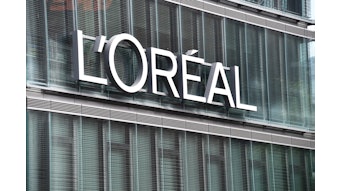
As the Cold War ended and technology rapidly advanced automation, the global marketplace became dominated by globalization. Globally integrated value chains and mass-market products became the way of the world as humans bridged the barriers, geographic and otherwise, which previously kept us apart.
But as the political tide has taken a turn toward populism—think Brexit and the election of Donald Trump—the era of globally integrated value chains and mass-market products is coming to a close, say the experts A.T. Kearney’s Global Business Policy Council.
“If you look at the headlines and the trade policies … the United States is front and center” in the drive towards localization, says McCaffrey.
Driving Factors
In Competing in an Age of Multi-Localism, the experts write that five key factors have ushered in an age of multi-localism—one defined by a preference for local industries, products and customs.
“A lot of these drivers have been slowly bubbling up,” says Courtney Rickert McCaffrey, manager of thought leadership at A.T. Kearney’s Global Business Policy Council. “And now we’re at a point where they are having a significant impact.”
These factors include:
Rising political risks—Including rising populism driven by the competition, offshoring of production and downward wage pressure caused be liberalized trade and open markets. (Since the end of the Great Recession, the report notes, the world’s 60 largest economies have enacted more than 6,000 trade barriers.)
“If you look at the headlines and the trade policies … the United States is front and center” in the drive towards localization, says McCaffrey.
“Consumers all over the world are readier to buy, and are more attracted to smaller brands, local brands—we see in a lot of markets that consumers just trust larger brands less than they do in the past."
Shifting consumer preferences—Such as growing demand for local and personalized product; reasons include the aforementioned growing populist and nationalist sentiments, growing concern about the environmental impact of purchases (particularly those which must be shipped long distances and require more resources to be brought to market) and the rise of e-commerce.
Additionally, research indicates that the majority of consumers in many markets—including the United Kingdom, France, Japan and the United States—say they have “very little or no confidence in large corporations and brands.”
When it comes to consumer preferences, says McCaffrey, “You’re seeing a lot of innovation in China and Asia.”
The introduction of modern industrial policies—Growing pressures to indigenize production, with economies around the globe seeking to accelerate the modernization and diversification of their economies; the United Nations Conference on Trade and Development reported that 84 countries, including developed and emerging markets alike, have recently implemented policies which take into account factors such as job creation, skills development, the promotion of entrepreneurship and innovation, digital access and deployment and bringing opportunities to underdeveloped areas.
Advancements in technology—Shifting economics of production locations; the “Fourth Industrial Revolution” has transformed the what, where and how of production, discarding and reuse, shifting the manufacturing model to one in which companies can product cost-effectively in local markets—even those in developed regions with higher labor costs.
Transitions in corporate governance structures and attitudes—Expanding the emphasis on the social license to operate, as consumers demand values-based, sustainable and socially conscious brands and a growing number of investors calling for companies to forego short-term performance gains in favor of long-term value generation.
Related: Top 10 Reasons Consumers Will Boycott Your Brand
How Businesses Should Respond
The report’s authors argue that companies need to focus on thriving in local markets by becoming locally integrated enterprises.
What are some keys to succeeding in this new landscape?
- Reassessing core markets by figuring out where the company’s value is strongest, including potentially pulling out of those where it is weakest. In the strong markets, to what degree do consumers prefer local brands and products?
- Examining global operations in terms of factors such as manufacturing and the supply chain, and identifying and minimizing any potential vulnerabilities for production and sourcing, including trade laws and technology.
- Developing a “sensory perception,” and being continuously aware of local condition and how they are shifting; this includes sight (keeping your eyes on the horizon), smell (trusting your instincts), sound (listening to and engaging with all stakeholders, including employees and consumers), taste (monitoring shifts in consumer tastes and preferences) and touch (keeping a finger on the pulse of technological changes).
What the Beauty Industry is Already Doing
Examples of companies and brands shifting their approach for the current landscape include YSL Beauty making its Chinese e-commerce debut through t-mall—which has a familiar, trustworthy name and established customer base—and LVMH’s new line of cosmetics, Cha Ling, which targets Asian consumers. Lancôme has incorporated Asian beauty trends into its Énergie de Vie product line.
"Younger consumers want brands that have a story, and are selling an image along with a product."
“This is much easier said than done, we realize,” says McCaffrey. “But if they don’t develop that in all their core markets, they’re really putting themselves at risk from these localization drivers”
And smaller companies and indie brands are in a particularly advantages position, adds McCaffrey: “Consumers all over the world are readier to buy, and are more attracted to smaller brands, local brands—we see in a lot of markets that consumers just trust larger brands less than they do in the past.
"Younger consumers want brands that have a story, and are selling an image along with a product. Smaller, niche brands and startups actually do that better than their established competitors, so they have a leg up in attracting this consumer.”











